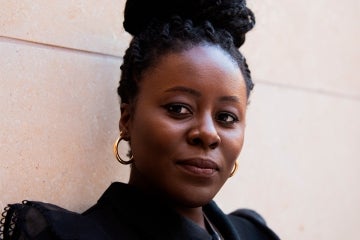Meet six U of T undergraduate students who were recognized for innovative research

Published: June 3, 2022
Six undergraduate students at the University of Toronto are being recognized for their innovative research, including their use of library services, on topics ranging from music, poetry and film to neuroscience and architecture.
The students – Eric Yang, Rion Levy, Sapolnach Prompiengchai, Conorr Norquay, Nicollo Abe and Tessa Di Vizio – are all recipients of an undergraduate research prize awarded by U of T Libraries to students who make effective and innovative use of information sources.
Larry Alford, U of T’s chief librarian, says he was “deeply impressed” at the level of research undertaken by this year’s winners at the undergraduate level.
“This award allows U of T students to reimagine their undergraduate education through research experiences while also drawing attention to the libraries and our world class collections,” he said. “I’m grateful to faculty across all three campuses who are working to strengthen information literacy in our community.”
The Patricia and Peter Shannon Wilson Undergraduate Research Prize provides students with an opportunity to reflect on their information-seeking experience while showcasing their research skills beyond the classroom – all while promoting undergraduate excellence. It’s made possible due to an endowment by Patricia Wilson and Peter Wilson that supports U of T Libraries in promoting excellence in undergraduate research.
In recognition of their achievement, each winner – chosen by a panel of six judges – will be awarded $1,000 and their reflective essays and assignments will also be shared on TSpace, U of T’s research repository, highlighting the extraordinary undergraduate work happening at the university.
Here’s a snapshot of the six U of T undergraduates who were recognized for their research skills – and glimpses of what they learned about information-seeking and research along the way.
Eric Yang
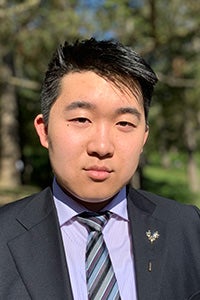 First-year student in the Faculty of Music
First-year student in the Faculty of Music
Project: “Three Arias from Nixon in China (1987)”
Sponsoring faculty member: Associate Professor Mark Sallmen
“While doing research for this project, I was surprised by the amount of information you could find through the music library alone, especially for an obscure work such as this project. My biggest takeaway from this experience is to reach out for help. Using the library should be more about talking to the librarians than blindly looking for resources yourself. Trying to do research for this project without the support of my mentors would have been impossible for me to complete.”
Rion Levy
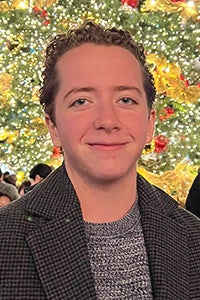 Second-year Victoria College student studying literature and critical theory in the Faculty of Arts & Science
Second-year Victoria College student studying literature and critical theory in the Faculty of Arts & Science
Project: “Peter Orlovsky: The Surrealist Beat Poet”
Sponsoring faculty member: Professor Albert F. Moritz
“This was the largest research project I had undergone to date and I realized how scattered information still is. I was able to locate a few related archive boxes in the United States but, because of the pandemic, was unable to access them since they have not been digitized. As the pandemic eased toward the fall of 2021, I realized the value of accessing libraries’ physical and digital texts to develop the most holistic understanding of the question at hand.”
Sapolnach Prompiengchai
 Second-year student studying neuroscience at U of T Scarborough
Second-year student studying neuroscience at U of T Scarborough
Project: “Combining Music Listening and Positive Reminiscence Reduces Acute Stress Response in Healthy Populations”
Sponsoring faculty member: Associate Professor George S. Cree
“One major takeaway I learned was that generating a good research question may involve using resources beyond the traditional databases like ProQuest/PubMed, etc. In this case, I formulated an impactful and feasible research question with the help of psychotherapy videos and bibliographies via databases like APA PsycTherapy and Psychology - Oxford Bibliographies. Although it took time to slowly make my way through tonnes of databases and resources, I would confidently say the time spent was priceless.”
Conorr Norquay
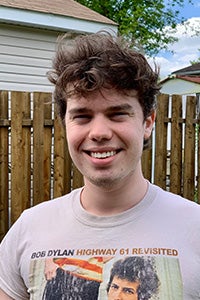 Third-year Victoria College student studying cinema in the Faculty of Arts & Science
Third-year Victoria College student studying cinema in the Faculty of Arts & Science
Project: “An Unrealized History of Sound Film: Charles K. Cregier and the Talking Motion Picture Machine.”
Sponsoring faculty member: Professor Charlie Keil
“The most important takeaway is the necessity of digitizing our historical records and making them publicly accessible. So much of my investigation relied on older documents that were (or were not) preserved; I repeatedly ran up against the roadblock of non-digitized and non-accessible records that caused important details to become absent from the narrative. The prized technology at the heart of my project allegedly exists in the National Archives, yet without an accessible digital record its location and movement have been lost to time. This project has elucidated just how vital archival preservation and digitization efforts truly are to informing research and its conclusions.”
Nicollo Abe
 Fourth-year student in the John H. Daniels Faculty of Architecture, Landscape, and Design
Fourth-year student in the John H. Daniels Faculty of Architecture, Landscape, and Design
Project: “Architecture on Modern European Banknotes: In Search of Stability through Abstract Circulation”
Sponsoring faculty member: Sessional Lecturer Ipek Mehmetoğlu
“What I learned throughout this information-seeking process was the value of images and photos as I frequented the Eberhard Zeidler Library and U of T Libraries’ online database. Whether my primary or secondary sources were printed or digitally sourced, there were many times where I relied upon the images that are embedded in them. Perhaps this was due to the nature and scope of the research, but I found that photographs and illustrations are essential components in knowledge-making and research.”
Tessa Di Vizio
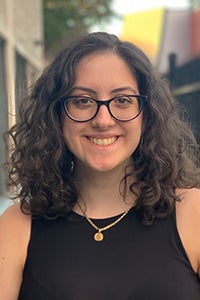 Fourth-year Trinity College student studying international relations and political science in the Faculty of Arts & Science
Fourth-year Trinity College student studying international relations and political science in the Faculty of Arts & Science
Project: “With More than a Little Help from ‘Our Canadian Friends’: Canada, the United States, and the Canadian Caper, 1979-1980”
Sponsoring faculty member: Assistant Professor Timothy Sayle
“Research is not a solitary process of scouring library stacks and databases for sources. I felt part of a scholarly community having worked with researchers, archivists and librarians to explore a wealth of primary sources as well as some secondary literature on my topic. It was fascinating to see the range of archival materials available (and easily accessible to undergraduates) at U of T, and I particularly enjoyed searching through the Victoria College and Trinity College archives for files for my research.”

